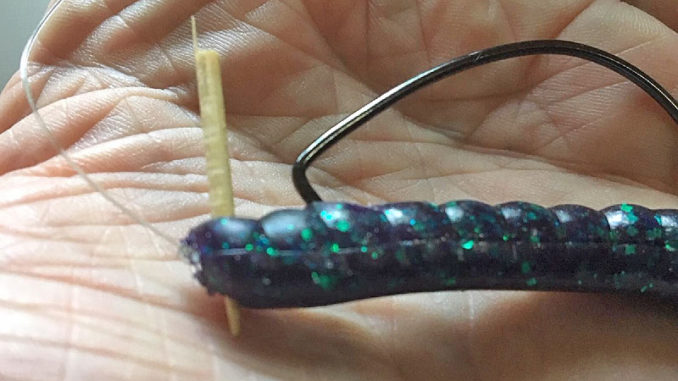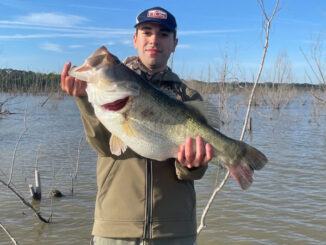
One of the best tools a bass fisherman can have, especially during the summer when fish live largely in deep, cool, oxygenated water, are toothpicks — and not to clean peanut butter from an angler’s teeth.
What’s the deal with toothpicks?
For years, fishermen would “peg” the bullet weights used on Texas rigs with a toothpick, jamming the sharp end of a pick into the hole where the line threads through the weight. After breaking off the rest of the pick, fishermen had a bullet weight that wouldn’t slide up the line — a big aid in being able to cast longer and more accurately.
The next problem solved by toothpicks is the time spent readjusting or putting new soft-plastic lures on hooks after a bite. Often, a fish that hits a soft-plastic bait might not be impaled on the point of the hook, but it would pull the worm or lizard back off the hook.
“Got a solution for that one,” said veteran guide Maynard Edwards. “I like to use this with a jig-and-pig, but you also can use it with creature baits.”
Edwards’ solution to prevent bass from ripping or tearing off jig trailers is to insert a piece of toothpick sideways through the head of the soft-plastic bait, then break it off even with each side of the lure. When he slides the trailer on the jig’s hook, he makes sure the point goes in below the toothpick in the lure’s body. That way, the toothpick will be in place and help keep the trailer from tearing off.
When it comes to Texas-rigging soft plastics, he’ll thread the bait all the way up on the hook, then push one end of a toothpick through the plastic and through the eye of the hook. That helps keep the bait from being pulled down on the hook.
“It keeps the hook from pulling free (from the lure), and you can cast (jigs) farther,” he said. “You also don’t fling (soft plastics) off the hooks so much.”


